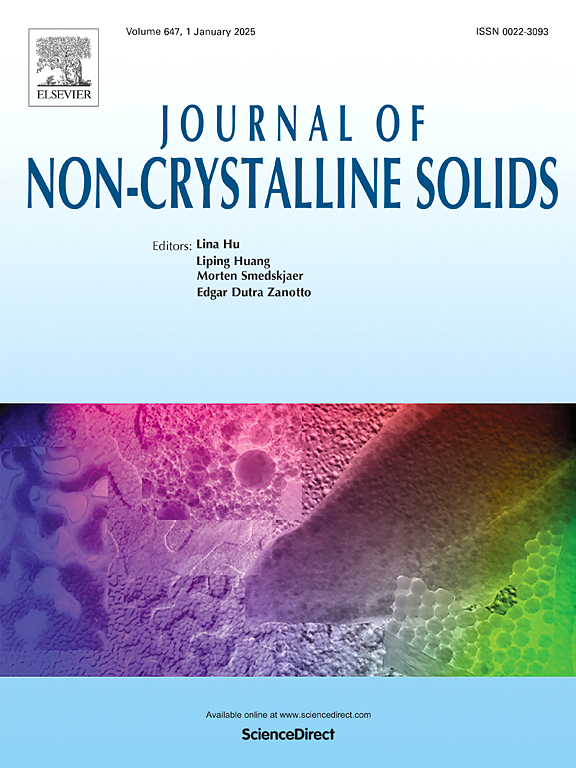Numerical simulation of temperature in forming surroundings for E-Glass fiber
IF 3.2
3区 材料科学
Q1 MATERIALS SCIENCE, CERAMICS
引用次数: 0
Abstract
In spinning, the temperature of the glass melt and the forming surroundings play a crucial role in determining the diameter of the electrical glass (E-glass) filament. It is essential to control or predict the temperature of the forming surroundings. In this study, a simplified cooling model of the fin for G75 E-glass fiber was constructed and simulated to explore the influence of ambient temperature on the forming process of E-glass fiber. The multi-physical field coupling of solid-fluid conjugate heat transferring and surface-to-surface radiation imitates the cooling model. The temperature of the bottom of the bushing plate was measured with an infrared thermal imaging instrument, and the ambient temperature of the area of filament root forming was measured with a thermocouple. Considering the device is fixed, the key experimental variable of the numerical simulation is the distance from the top of the cooling fin to the bottom surface of the bushing plate. The simulated results are compared with the actual measurements, proving that it is feasible for the simplified cooling model to simulate the forming of E-glass fiber. The results of numerical simulations also show that (1) the temperature of the glass melt at the outlet of the nozzle is 1400 K and the ambient temperature of the filament root forming dropped by >500 K; (2) when the top of the cooling fin is 4 mm away from the bottom surface of the bushing plate, the fin has the best cooling effect on the E-glass fiber.
电子玻璃纤维成型环境温度的数值模拟
在纺丝过程中,玻璃熔体和成型环境的温度对决定电子玻璃(E-glass)灯丝的直径起着至关重要的作用。控制或预测成型环境的温度至关重要。本研究构建并模拟了 G75 电子玻璃纤维翅片的简化冷却模型,以探讨环境温度对电子玻璃纤维成型过程的影响。固-流体共轭传热和面-面辐射的多物理场耦合模拟了冷却模型。使用红外热成像仪测量了衬套板底部的温度,并使用热电偶测量了丝根成形区域的环境温度。考虑到装置是固定的,数值模拟的关键实验变量是冷却翅片顶部到衬套板底面的距离。模拟结果与实际测量结果进行了比较,证明简化冷却模型模拟 E 玻璃纤维成型是可行的。数值模拟结果还表明:(1) 喷嘴出口处的玻璃熔体温度为 1400 K,而丝根成形时的环境温度下降了 >500 K;(2) 当冷却鳍顶部距离衬套板底面 4 mm 时,冷却鳍对 E 玻璃纤维的冷却效果最好。
本文章由计算机程序翻译,如有差异,请以英文原文为准。
求助全文
约1分钟内获得全文
求助全文
来源期刊

Journal of Non-crystalline Solids
工程技术-材料科学:硅酸盐
CiteScore
6.50
自引率
11.40%
发文量
576
审稿时长
35 days
期刊介绍:
The Journal of Non-Crystalline Solids publishes review articles, research papers, and Letters to the Editor on amorphous and glassy materials, including inorganic, organic, polymeric, hybrid and metallic systems. Papers on partially glassy materials, such as glass-ceramics and glass-matrix composites, and papers involving the liquid state are also included in so far as the properties of the liquid are relevant for the formation of the solid.
In all cases the papers must demonstrate both novelty and importance to the field, by way of significant advances in understanding or application of non-crystalline solids; in the case of Letters, a compelling case must also be made for expedited handling.
 求助内容:
求助内容: 应助结果提醒方式:
应助结果提醒方式:


